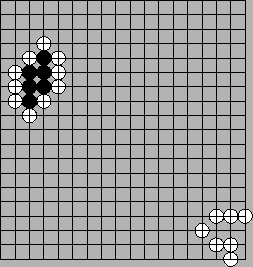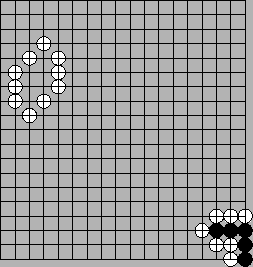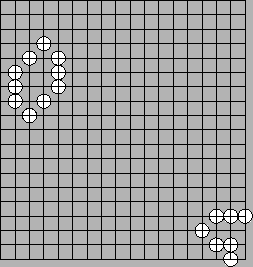It would be nice to have some idea how long a game could be. We ought to be able to set some bounds on this.
Unfortunately, this is not a very close upper bound. The coe rule applies after Lift has run, which means that while we would have counted the first two board positions below separately, they both reduce to the third one:



Any board in which some pieces should be lifted, then, is one that we don't want to be counting towards our number of games but are, and so we are over counting the maximum number of moves by a decent margin.
Unfortunately, without running an algorithm like our isSafe
function, we don't have a way to tell if a board is going to reduce in
the lifting process or not. This makes it hard to have a general idea
of how much of an effect these reductions will have on the total
number of distinct configurations. It is unlikely3 that we would be reducing by enough to take us out
of the exponential range, so our theoretical upper bound on
game length is order ![]() and hence exponential.
and hence exponential.
This upper bound, though, is fantastically large. On a 19 by 19 board
we would have the bound on the order of
![]() , or
, or
![]() . Games almost never go anywhere near that long. Unless
people are learning the game or trying to make it last a long time,
they almost never run out of pieces. As there are
. Games almost never go anywhere near that long. Unless
people are learning the game or trying to make it last a long time,
they almost never run out of pieces. As there are ![]() pieces in a
typical Go set, we now have an (empirical) linear bound.
pieces in a
typical Go set, we now have an (empirical) linear bound.